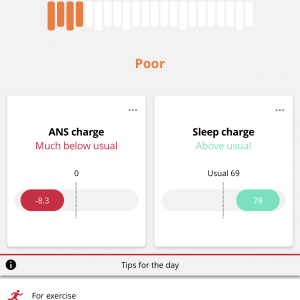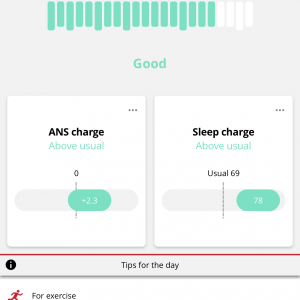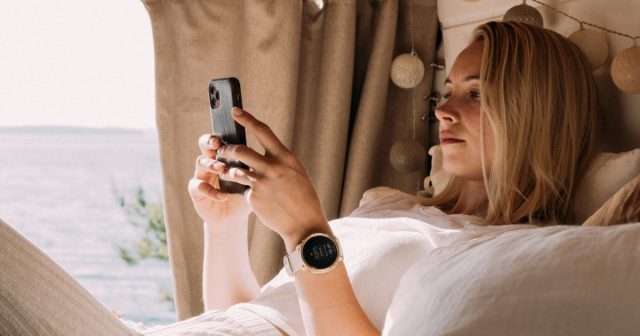This article is the final installment of a four-part blog post series, The Athlete Sleep Diaries, with each post featuring a real-life Polar Ignite user experience. This series reveals what four athletes learned about sleep tracking and using the data and insight to improve their sleep and recovery. Here’s what Polar Ambassador, personal trainer, and nutritional coach Nathalie Lennon learned about her sleep and her “best lifestyle change.”
Despite our best laid plans, sometimes it’s not possible to get an optimal night of sleep on a night after night basis. It’s a frustrating (and frankly exhausting) experience, and no matter if it’s stress from your day or training session bleeding into the night, stress from illness or just one of those nights, a lack of sleep can impact mental clarity and the ability to fully recover — ultimately decreasing athletic performance.
This makes sense on the surface level, but with a little more insight on a variety of factors, you’ll be able to make sleep-friendly decisions that affect not just sleep habits, but how to pair sleep quality and training intensity on a daily basis.
READ MORE: Sleep hygiene tips
Until recently, I was one the people who put less of an emphasis on sleep as I did on other aspects in my life so tracking and analyzing my sleep was a much needed wake up call – or you know, go-to-sleep call.
I was sick for part of the testing period when I tracked and documented my sleep and recovery using the Polar Ignite fitness watch but the insights and guidance (specifically the Nightly Recharge recovery measurement) helped me make an informed decision to limit training intensity to maximize recovery by getting a few much-needed additional nights of sleep.
As I expected, I became competitive with myself, aiming to always best my sleep numbers from the night before. Here’s what I learned.
Sleep progression – before and after tracking
I never realised just how tired this was causing me to feel.
Before using the Polar Ignite, I would have slept for an average of 7 to 7.5 hours a night, falling asleep around 11.30 p.m. but taking a long time to fall asleep — waking often and checking my phone when I did, with no routine before bed to help me wind down.
The Polar Ignite’s Nightly Recharge feature helped put things into context and I started to become much more aware of how lacking I was in terms of sleep amount and quality and recovery.
At first, it revealed that my sleep time never hit the recommended eight hours, and I often had many interruptions. My “actual sleep” was rarely what I thought it was. I often only got four sleep cycles and less than 50 minutes of deep sleep.
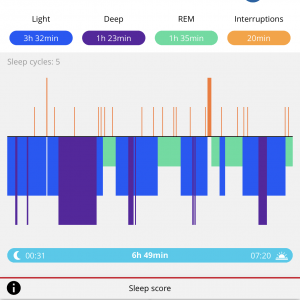
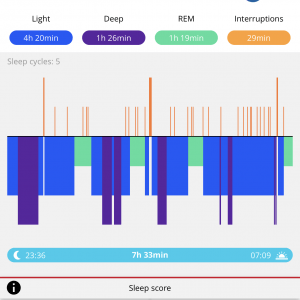
Now I’m getting five to six sleep cycles and a greater proportion of deep sleep most nights.
POLAR SLEEP INFO: SLEEP CYCLES
A healthy adult normally goes through four to five sleep cycles over the course of a night. Normally sleep cycles proceed from light sleep into deep sleep, and then back to REM sleep.
Sleep regeneration looks at the quality of your sleep in terms of the proportions of restorative sleep stages: REM sleep and deep sleep.
To monitor your sleep, the Polar Sleep Plus Stages feature offers a sleep score that summarizes how much and how well you’ve slept. A typical sleep score is around 70 to 85 (on a scale of 1-100).
Small changes, Big results
When I began wearing the Polar Ignite, I instantly became far more aware of my sleep quality and ANS recharge. I became competitive with myself, aiming to always get a better night’s recovery.
In the past, I just thought about getting a good amount of sleep, but the Nightly Recharge feature opened my eyes to the recovery aspects that go much deeper than just sleep amount.
Going to bed earlier
I began slowly tapering back my bedtime a little earlier each night, and for a time was getting to bed and falling asleep by 9.30 p.m. or earlier. Now, my schedule has changed a little, but I always try to get to bed by 9.30 p.m. to wind down and sleep by 10 p.m. or just after. The earlier I can go to bed, the better.
winding Down before bed
I also created a bedtime routine to help me wind down before bed so that my sleep quality could improve:
- I now reduce blue light exposure.
- I don’t eat a big meal before bed.
- I reduce lighting and lower the temperature in my room to read before bed.
Doing this allowed me to get a much more restful night’s sleep with greater deep sleep, more sleep cycles and a better ANS charge in comparison to when I first began using the Ignite.
Tweaking my sleeping habits really changed the quality of my life for the better — it’s been the best change I have made to my lifestyle over the last three years.
I then realised just how rested I could feel waking up, how strong my sessions could be and how much energy and concentration I was lacking before I made sleep and recovery a greater priority.
My lifts started improving, my resistance to fatigue got far better and I was getting faster in my return to running! Also, I felt my body was recovering much quicker from sessions than it used to.
My bedtime routine is a change that I’ve kept, and it’s helped me continue to maximize sleep regeneration and recovery. I now prioritize making time to get to bed early and make sure I start my wind-down routine one hour before bed.
POLAR SLEEP INFO: NIGHT-TIME RECOVERY
Recovery plays a major role in performance development, optimal daytime functioning, well-being and health. It is not uncommon that people who train regularly, not aiming for the podium, feel fatigued or stressed out. Combining training with work, family and other commitments is sometimes demanding and there may not always be enough time for recovery.
The Nightly Recharge feature helps you see how your body is able to recover from training and stress by giving tips on exercise, sleep and regulating your energy levels, teaching you how you can improve your night-time recovery.
Data-driven training decisions
Before tracking and analyzing my sleep, I had no idea how many sleep cycles I was getting, or how many I should aim for. This feature allowed me to look into my sleep regeneration, in other words how much deep sleep and REM sleep I was getting.
A restorative night sleep has a good amount of both: REM sleep is important to support learning and memory while deep sleep truly restores your body. I usually hit the average or above for both of these:
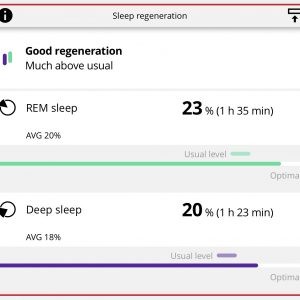
The ANS charge was my favorite addition. I tend to stress quite easily, and the effects of stress on the body can be seen in the ANS functioning and overnight activity.
While it helps me to see times my body may be falling under the weather, it has been invaluable for helping me determine days where I was under too much stress than was healthy or safe to train through.
I can generally foresee when it will be red, especially on more stressful days where sleeping is difficult because my mind is racing. I may not have taken a second to stop and breathe all day (which now the Serene feature helps me to keep on top of). My heart rate and breathing rate are generally higher on stress filled days, and I can see this graphed throughout the night.
The Nightly Recharge feature has helped me input more stress coping and reduction mechanisms into my day so that I can have a more restorative night of sleep. However, life takes over some days and stress is unavoidable. On these days, I know to train lighter or rest.
Also, I think it’s extremely important to be flexible in your training. In my past I was not so flexible, and felt compelled to always tick every box if I was following a specific program regardless of signals suggesting stress overload or poor recovery.
I now view training from a completely different mindset, and I know I can maximize my performance by training for strength or running longer distances on days where my Nightly Recharge score is high. On days where my score is low, I know to just do light training or rest, and if that means changing my original plan, that is what I do.
POLAR SLEEP INFO: Ans charge
The effects of stress on your body can be seen in the functioning of your autonomic nervous system. After a demanding day, it takes more time than usual to switch from activation mode to relaxation mode, which is reflected in the ANS charge.
In general, when you are under stress your heart rate and breathing rate are higher than usual, and heart rate variability is lower than usual. Other factors that prevent efficient ANS recovery during sleep include hard physical exercise, intense emotions, alcohol, fever and inflammation. Stress can also have a negative effect on the quality of your sleep.
Based on what we’ve measured from you, you get personalized daily tips in the Polar Flow app on exercise, and tips on sleep and regulating your energy levels on those particularly rough days. Tips for the day are displayed on the opening view of Nightly Recharge in the Flow app.
You get an exercise tip every day. It tells you if you should take it easy or go for it. The tips are based on Nightly Recharge status, ANS charge, sleep charge and cardio load status.
READ MORE Athlete Sleep Diaries:
If you liked this post, don’t forget to share so that others can find it, too.
Or give it a thumbs up!
I like this article
Please note that the information provided in the Polar Blog articles cannot replace individual advice from health professionals. Please consult your physician before starting a new fitness program.

